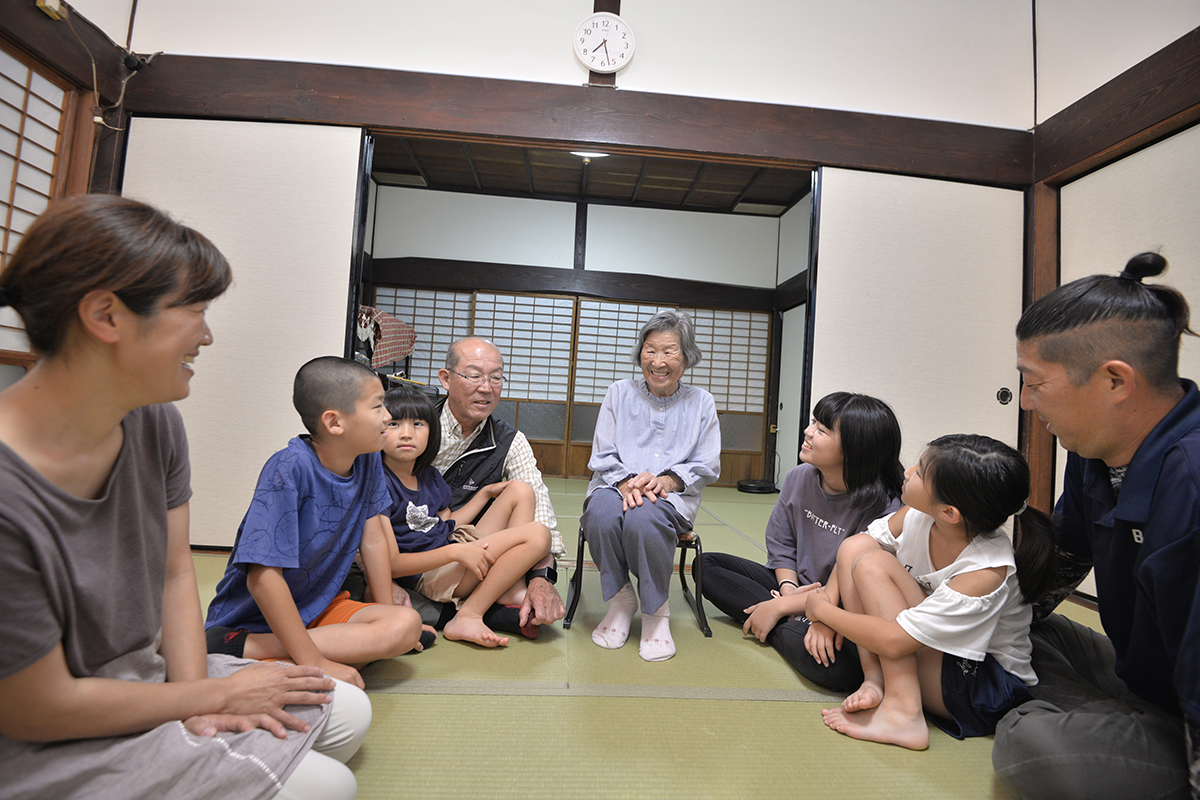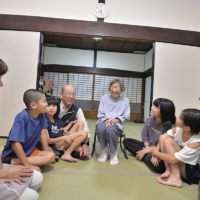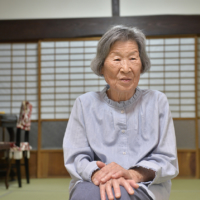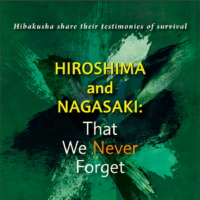Tsuyako Tasaki’s day starts at 5 a.m. At 95, living in a four-generation household, she still takes charge of the laundry for the entire family. However, being healthy and surrounded by four great-grandchildren is not something she takes for granted. Her 17-year-old self could have never imagined seeing Nagasaki return to the bustling city it is today.
Although Tasaki’s daily life is surrounded by the warmth of her nine-member family, she still carries deep grief in her heart. At the time of the atomic bombing of Nagasaki, she was only 17, but today she can still vividly recall many of the horrific memories from the aftermath of the attack.
The day after the bombing in August 1945, while attempting to visit a friend in the city, she saw her friend’s father removing maggots from her body as she lay limp and lifeless. Walking home, she was horrified to see a human head lying on the ground. Later, the sight of a young child’s bloated body brought tears to her eyes. Further on, she saw a train carrying people with severe burns all over their bodies, their skin hanging off.
“It is hard to think back on these cruel, out-of-this-world scenes,” Tasaki said. “As I walked, I became emotionally paralyzed by the sheer awfulness of it all.”
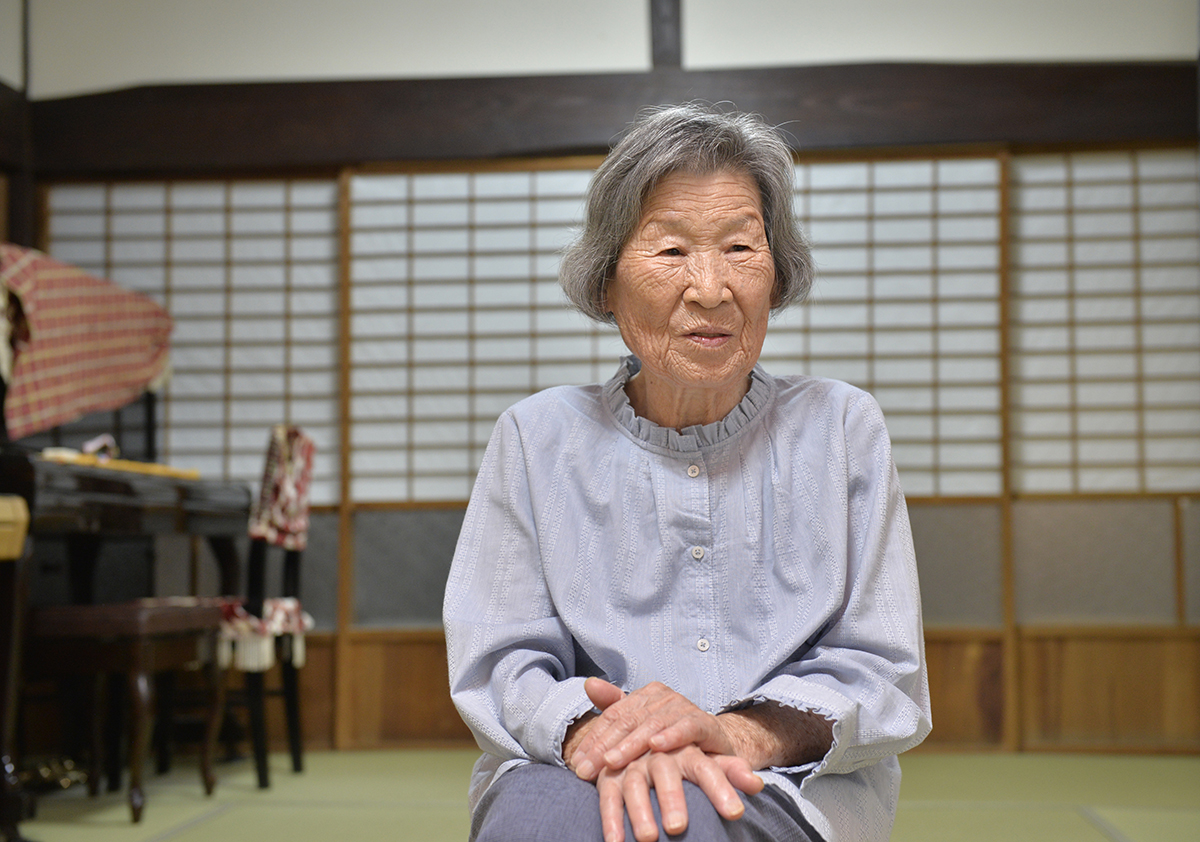
Tasaki lost three children; one was stillborn and two died shortly after birth. The youngest of her two remaining children also died suddenly at 33, and she feared these tragic deaths were related to the aftereffects of radiation.
“My husband and I never talked about the war or the atomic bombing because it was too painful for us,” she said. It was 28 years ago when she decided to break her silence, sharing her testimony with the Nagasaki National Peace Memorial Hall for the Atomic Bomb Victims.
As she recently explained to a researcher who came to her home, it was no longer possible to keep her feelings bottled up.
“For 78 years, I have lived with the feeling that I don’t want to remember those days and yet also the feeling that I must tell my grandchildren about it.”
The members of her extended family gathered around her and commented on what they had learned from her memories.
“I heard about my mother’s experience when I was in elementary school, when my mother’s white blood cell count rose abnormally,” her only surviving son, 70-year-old Tomishige, recalled.
Eiko, married to her grandson Masanori Tasaki, is interested in peace education and often asks Tsuyako questions. Yet the youngest generation of her family, four healthy great-grandchildren aged 7 to 12, have heard little and can only recall a few details from their visit to the Nagasaki Atomic Bomb Museum this year.
Great-granddaughter Haruka, 12, said: “It’s so cruel that people were pierced by shards of glass. The self-centeredness of human beings must change. We have to take good care of those close to us.”
Boisterous brother Ryoga, 10, asked: “Why don’t we get rid of nuclear weapons? Why don’t all countries get rid of them?”
It’s our turn now
This survivor’s story brings to light the powerful resilience the hibakusha have developed. Yet it is hard for each of them to constantly relive the horrors of those days. As Kazuko Kawada, a fellow hibakusha from Hiroshima, says in “Hiroshima and Nagasaki: That We Never Forget,” a book of survivors’ testimonials compiled by the Soka Gakkai Youth Division, some still tremble and remain silent when asked, “What happened that day?”
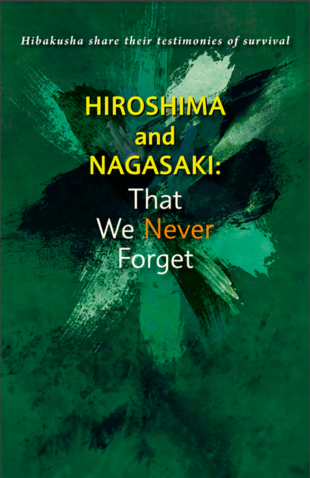
“We still have never digested our experience thoroughly. We all carry intense feelings of grief, having so abruptly lost family members, friends, our entire communities and our normal daily lives,” she explained. As a result, even close family members often do not know the full details of the horrors that were experienced by their loved ones.
As the vital voices of this disappearing generation of hibakusha get fainter, the responsibility to honor their legacy now lies with the younger generations.
Constant efforts to educate and raise awareness are needed to successfully convey a full understanding of the humanitarian impact of these devilish weapons to future generations.
Ordinary people sacrificed
When asked what her message to world leaders would be, Tasaki stated: “It is always the poor who suffer more because of the deployment of weapons. Wars are always started by the ‘higher-ups.’ It is always ordinary people who are sacrificed. As difficult as it may be to get rid of nuclear weapons right away, I sincerely hope for the day when they will be gone.”
The courage it takes for many A-bomb survivors to relive their trauma for the sake of a better world is profound.
Learning from survivors of war can be the first step in preventing history from repeating itself. Given the recent revival of the atomic threat, we must carry forward the heartfelt wishes of the hibakusha for lasting peace, and their powerful determination to rid the world of nuclear weapons.
Honoring the experiences of those who have suffered the most, each of us must ask ourselves what we can do.
You can read the full content of “Hiroshima and Nagasaki: That We Never Forget” online for free.
Videos of hibakusha testimonies are also available on YouTube.
Soka Gakkai, a global, community-based Buddhist organization, has been promoting nuclear abolition for over 60 years. The Soka Gakkai Youth Division in Japan has published 80 volumes of wartime experiences and its Women’s Peace Committee has filmed the testimonies of female hibakusha. For over 40 years, Soka Gakkai International President Daisaku Ikeda has authored proposals offering concrete approaches to complex global issues, including a statement released earlier this year to coincide with the Hiroshima G7 summit.



